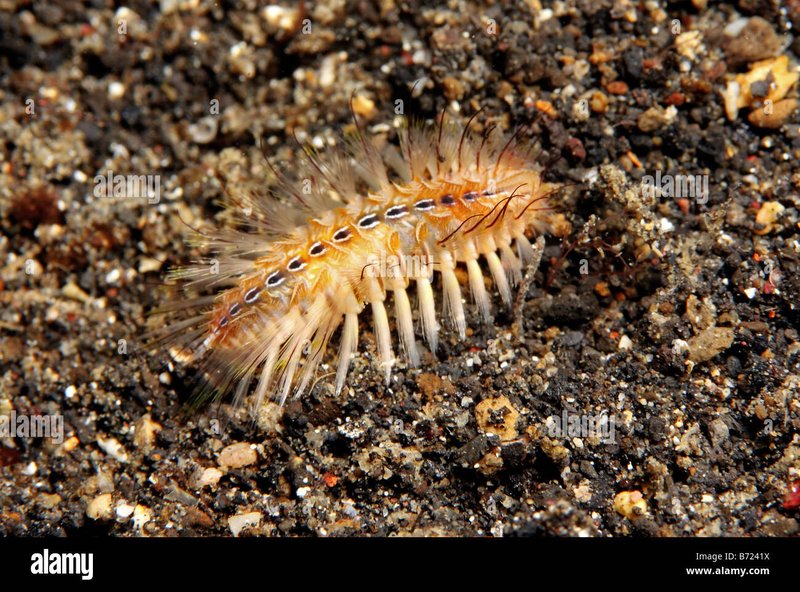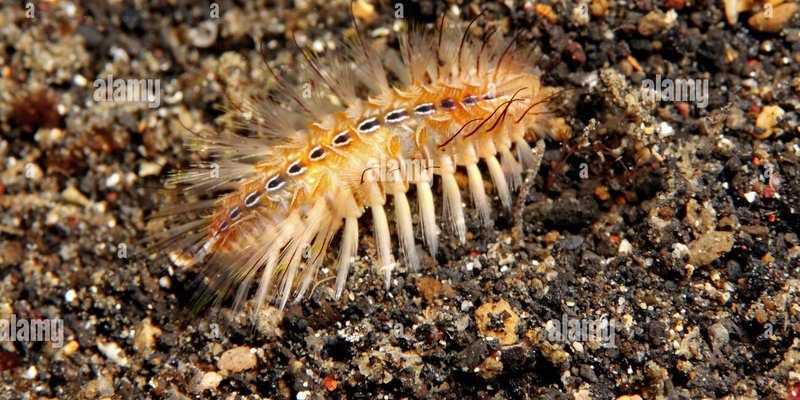
Imagine a healthy stream or pond bursting with life. In these hidden habitats, you might find these polychaetes wriggling about, playing crucial roles in the ecosystem. They contribute to nutrient cycling and are essential food sources for several aquatic animals. Understanding them can help us appreciate the delicate balance of these freshwater environments.
So, how do these freshwater polychaete worms differ from bristle worms? And why should you care? Let’s dive deeper into this fascinating topic and unlock the secrets of these remarkable creatures.
What Are Freshwater Polychaete Worms?
Freshwater polychaete worms are segmented worms that belong to the class Polychaeta and are often found in various freshwater bodies, including rivers, lakes, and wetlands. Unlike their marine relatives, these worms can adapt to freshwater environments, which makes them a unique study subject for ecologists and enthusiasts alike.
Here’s the thing: polychaetes typically have bristly, hair-like structures along their bodies called chaetae. While marine bristle worms may be more familiar due to their striking colors and sizes, many freshwater polychaetes are smaller and less vibrant. Nonetheless, they’re just as fascinating and crucial to their ecosystems.
If you try to picture them, think of a tiny, segmented creature that looks like it’s wearing tiny bristles. They generally range from a few millimeters to a couple of centimeters in length. These worms are not only remarkable for their appearance but also for their ecological roles. They’re often found in sandy or muddy substrates, where they burrow and rummage through the sediment, keeping things clean and well-aerated.
Habitats of Freshwater Polychaetes
Freshwater polychaete worms thrive in various habitats, each boasting unique characteristics. They can be found in slow-moving streams, ponds, and even wetlands. Their ability to adapt to different environments is key to their survival and ecological importance.
In slower-moving waters, polychaetes often burrow into the sediment, where they feed on organic material. This burrowing activity helps improve water quality. Think of it as nature’s way of composting; these worms break down waste and create a richer environment for other organisms. In contrast, in faster streams, you might find them clinging to rocks or submerged vegetation, demonstrating their versatility.
You might wonder why their habitat matters. Well, these worms act as indicators of water quality. A healthy population of polychaetes typically means the ecosystem is thriving. If their numbers dwindle, it could signal environmental issues, prompting further investigation into the health of the water body.
Feeding Habits and Diet
So, what do freshwater polychaete worms eat? They’re primarily detritivores, which means they feed on decomposing organic matter. This includes algae, dead plant material, and tiny microorganisms. This diet is essential, as it helps recycle nutrients back into the ecosystem.
Imagine a bustling buffet where these worms are the cleanup crew. As they munch away, they break down larger particles into smaller bits that can be consumed by other organisms, like fish and aquatic insects. This process not only aids in nutrient cycling but also contributes to the overall health of the aquatic environment.
Interestingly, some species of freshwater polychaetes can also filter feed. By extending their bristles into the water, they capture tiny particles, making them versatile eaters. This adaptability allows them to thrive in different conditions and ensures they play a significant role in their ecosystem.
Role in the Ecosystem
Freshwater polychaete worms might be tiny, but their impact on aquatic ecosystems is enormous. They contribute to the overall health of freshwater environments in several ways:
- Nutrient Cycling: By breaking down organic matter, they convert it into forms usable by other organisms.
- Soil Aeration: Their burrowing helps to aerate the sediment, promoting healthier conditions for plants and other microorganisms.
- Food Source: Many fish and invertebrates feed on polychaetes, making them a vital part of the food web.
Without these worms, there could be a ripple effect throughout the ecosystem. Fish populations might decline, water quality could deteriorate, and the overall biodiversity of the habitat could be at risk. They’re not just inhabitants of the water; they’re crucial keystones that help maintain the balance.
Comparing Freshwater Polychaetes and Marine Bristle Worms
Now, you might be asking yourself: how do freshwater polychaete worms differ from marine bristle worms? While they share many similarities, there are key distinctions that set them apart.
First, habitat is the most obvious difference. Marine bristle worms thrive in oceans and seas, living in a variety of environments from deep waters to coastal areas. In contrast, freshwater polychaetes are adapted to live in freshwater habitats, where salt levels are negligible.
Second, size and appearance can vary significantly. Marine bristle worms can reach impressive lengths and often have vibrant colors. Freshwater polychaetes, on the other hand, are generally smaller and less colorful, often blending into their surrounding environments. This lack of bright coloration can make them harder to spot, but it also provides them with excellent camouflage from predators.
Lastly, feeding mechanisms may vary as well. While both types can be detritivorous, marine bristle worms often have more diverse diets due to the abundance of food sources in ocean environments. Freshwater polychaetes, meanwhile, are often more limited by their environment.
Conservation and Threats
Like many aquatic species, freshwater polychaete worms face threats that can impact their populations and habitats. Water pollution, habitat destruction, and climate change are significant factors that can disrupt their delicate ecosystems.
Pollutants from agricultural runoff or urban areas can degrade water quality, making it challenging for these worms to thrive. Additionally, habitat destruction from activities like dam construction and land development can reduce their living spaces.
So, why should we care? Conservation efforts aimed at protecting these worms and their habitats help maintain the balance of freshwater ecosystems. By ensuring clean water and healthy environments, we can support not only polychaetes but a vast array of other organisms that rely on similar habitats.
How to Observe Freshwater Polychaete Worms
If you’re interested in observing freshwater polychaete worms, it’s easier than you might think! You don’t need any specialized equipment—just some curiosity and a sense of adventure.
Start by finding a local stream, pond, or wetland. Look for areas with soft sediment, where these worms are likely to be found. You might want to wade into the water or carefully dig into the mud using a small shovel or your hands.
Once you gather some sediment, you can place it in a clear container filled with water. Allow the container to sit for a while, and watch as the worms emerge. You might be surprised to see how many worms are hiding in the muck! Just be sure to return the sediment and worms back to their home to minimize disturbance.
Final Thoughts on Freshwater Polychaete Worms
Freshwater polychaete worms may not be the most glamorous creatures in the animal kingdom, but they play essential roles in maintaining the health of our waterways. From nutrient cycling to serving as a food source, their importance cannot be overstated.
Taking the time to understand these fascinating organisms highlights the intricate web of life that exists right beneath the surface of our local streams and ponds. So next time you’re near a body of freshwater, consider what lies beneath the surface and the myriad of tiny lives that contribute to the beauty and balance of our natural world. Embracing this curiosity helps foster a greater appreciation for the ecosystems around us, which is something we can all strive for.

